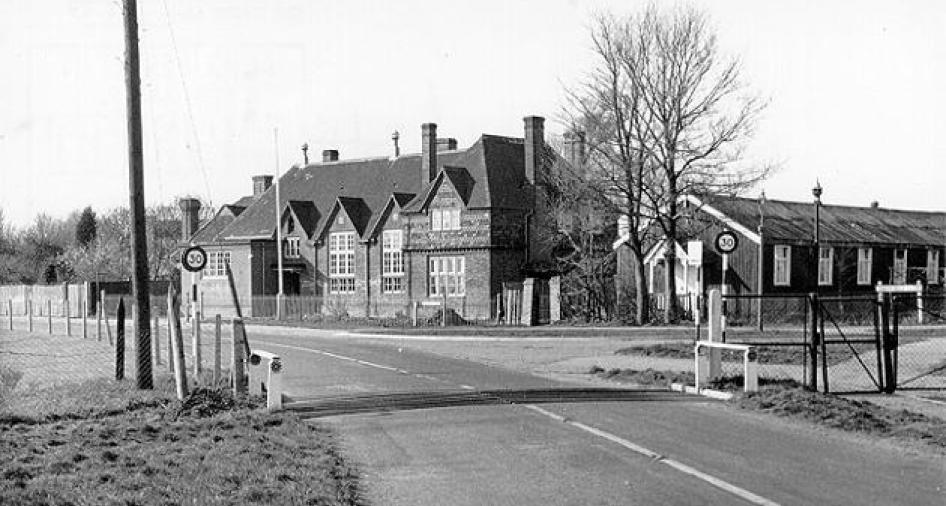
Dorney in the Domesday Book
Dorney & Boveney feature among the 13,000 English & Welsh places described by William the Conqueror’s scribes in the Domesday Book.
This extraordinary historical record plays a role in the story of Dorney equivalent to its central role in the documentation of the nation. It’s intriguing to seek out evidence of continuous activity in this part of the Thames valley, and Domesday Book reveals apparently thriving communities in the late 11th-century, providing a link between the re-cent findings of Oxford Archaeology relating to 8th-century Saxon settlements and later Church & Manorial records.
Domesday Book was compiled with remarkable haste in 1085 & 1086. There was nothing like it in contemporary Europe, and its detailed coverage of the country was unmatched here until the first population census of 1801. As with that census, William 1’s motivation was to accurately assess the Kingdom’s true resources at a time of unrest and invasion.
Leaving aside the details of land holding and obligations, the Dorney records reveal two primary aspects of early Norman society.
Firstly, a community like Dorney was, to 21st-century eyes, an exotic, or even harsh & scary place with villeins and even slaves, with exotic livestock harvested such as eels, even though the place names have a modern ring about them.
Secondly, a mere 20 years after the Conquest we see documentary evidence of how a flourishing Saxon land owning aristocracy was elbowed out with indecent haste, to be replaced by a French elite, presumably reaping the rewards of helping William secure his crown. It looks as if a set of characters drawn from ‘Lord of the Rings’ or ‘Beowulf’ are superseded by Norman adventurers with smoother, modern sounding names. El-draed, Beorhtric and Esgar the Staller lose out to the likes of Miles Crispin, Ralph and Gerard.
In 1086, both Dorney (or Dornei as it was named in the Book) and Boveney (Bovenie) were in the ‘hundred’ of Burnham and the county of Buckinghamshire. Then, as now, these settlements were modestly populated, as compared to most of the 224 places listed in the county. The website www.domesdaymap.co.uk classifies Domesday places by size. Dorney with 11 households is ‘quite small’ while Boveney with only 1 listed household is ‘very small’. But we must have been relatively prosperous as the ‘tax assessed’ is ‘medium’ for both, with Boveney yielding more ‘geld units’ – 4 – than Dorney’s 3.
Along with Upton & Hitcham, Dorney is listed as part of the ‘Land of Miles Crispin’. The land is ‘held of Miles’ by one Ralph, who is listed as the ‘Lord’. There was ‘land for 3 ploughs’. Living here were 5 villeins, 4 ‘bordars’ and 2 ‘slaves’. Villeins were nominally free, but owed labour to their Lord. Bordars were lower in the social pecking order, owning less land and owing more onerous services. Those described as ‘slaves’ made up about 10% of the population, had no property rights and could be bought & sold by the Lord.
There were horses, a fishery ‘rendering 500 eels’ and ‘woodland for 150 pigs’. It looks as though the division of estates in the re-parcelling of the land was leading to declining prosperity. Tempori Regis Edwardi (literally, ‘in the time of King Edward’), Dorney was ‘worth £3’ to the Lord, but by 1086 this value had halved.
Confusingly, Boveney is listed with two different Lords in 1086. There was Gerard, and there was Reinbald of Cirencester. The latter looks like a native who had somehow held on to his position, being also listed as Lord for 1066. Only one villein is listed for the hamlet, but there seems to have been meadow for 3 ploughs and woodland for 60 more pigs.
For much of our past, those lowliest in the hierarchy remain anonymous, but what do we know about those listed as the top landowners?
Miles Crispin is listed as Lord or ‘Tenant in Chief’ (as in Dorney) for 131 places in the Domesday Book, mainly to the west of London. He is therefore one of the most significant landowners in the survey. He was born in Neaufles in France and took part in the 1066 invasion, being rewarded for his efforts with all those parcels of land.
Much of his windfall (but not Dorney) derived from his marriage to Maude, a descendant of Wigot, Edward the Confessor’s Lord of Wallingford. In later years, before dying in 1107, he was known as ‘Miles of Wallingford’. The rest came via confiscations of other Saxon thegns’ lands.
Before 1066, Dorney was ‘held’ by Aldred, who was ‘Morcar’s man’. Morcar became Earl of Northumbria in 1065 and was the brother in law of King Harold killed at the Battle of Hastings. Even so, he did not oppose the cause of William, and did not fight at Hastings. He only ran into trouble with the Conqueror after joining Hereward the Wake’s insurrection in 1070, after which he lost his lands and was exiled or imprisoned for the rest of his life.
The Domesday Book records for Dorney and Boveney on the one hand give a picture of local domesticity, with numbers of pigs and ploughs and villagers who can be counted on your fingers. But, they also show that our village was connected to more significant events and personalities, and that the Dorney experience mirrored wider trends in late 11th-century England.
Peter Bowman
Sources
- Domesday Map website
- National Archives website
- www.bbc.co.uk/history/british/normans/doomsday
- Prosopography of Anglo Saxon England website
